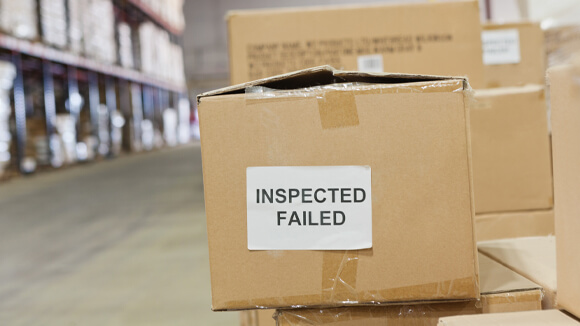How to reduce your product liability risk
11/09/2019 00:00:00by Doug Kelley11/09/2019 00:00:00How to reduce your product liability riskBluedrop Services


Obtaining product liability insurance makes smart business sense. It can help to protect your business in the case of a claim. Despite covering your risk, there may still be a need to deal with a claim which isn’t always straight forward.
Liability claims can range from anything from negligence to consumer protection. A claim can be made under the Consumer Act 1987 and is often related to physical injury to consumers. Unfortunately, product liability claims are quite common and can cause a serious impact to your business. You may lose customers, profits, and it can cost a fortune to protect and rebuild your reputation.
Therefore, it’s important to take additional defensive steps to keep your business running smoothly. It can help to protect your cash as well as your company reputation.
Step 1 – Conduct a risk assessment
In order to protect yourself against any risks, it’s important to firstly determine what they are. Conducting a risk assessment of your products can help you to find ways to minimise or eliminate any risk in the process.
A risk assessment should be conducted at each point in the process from design all the way to distribution to ensure that you’ve got all your bases covered. Especially if any changes are made down the line.
Step 2 – Do the same for your suppliers
To protect yourself, you will also want to review manufacturers procedures and processes to determine any risk. In fact, it’s important that you have contracts in place to get them to hold responsibility and be accountable when things go wrong on their side.
To ensure you aren’t adding to your risk levels, choose reliable suppliers with accreditation and strong reputations, instead of trying to cut costs. That way you can be sure that you’re getting higher quality goods coming in for your products.
Step 3 – Make sure your product liability insurance is enough
The amount of liability insurance coverage you need will depend on the nature of your products. Usually, it can be determined once you have conducted your risk assessment.
It’s always best to get advice on the best level of cover as well as to check any terms or exclusions that may be included within the policy. Obtaining the right amount of cover could be a contributing factor to any costs of claims and the continuous running of your business.
Step 4 – Make safety a priority
Safety should be at the forefront of your minds when creating your products, even from the design stage. When designing your products, it’s important to bear in mind any hazards or dangers you may face.
Your product will need to comply with industry certifications as well as government standards right from the beginning. If you protect yourself during the early stages, you’re less likely to face issues further down the line.
Step 5 – Product testing
Your business should conduct product testing at each stage of the process. Having quality control procedures in place can help you to identify any defects before any issues arise.
Taking reasonable steps during the development process as well as getting feedback before any commercial release can be integral to protecting your business.
Step 6 – Keep detailed records
Throughout your product manufacturing process, it’s important to keep documentation of all the steps you make through each process, especially during testing.
Written steps can demonstrate that you have gone through all the correct procedures and processes during the product creation. Including complying with requirements as well as recording risk assessments and any changes.
It can also help you when dealing with a claim, as it can be used as evidence to show that you went through each process correctly.
Step 5 - warn your customers
If your products do contain any dangerous or hazardous issues, it’s important to provide warnings on the items themselves for customers. It complies with government requirements and can help to protect you in the event of a fault.
For example, flammable items such as clothing need to have it clearly displayed on the label. It can help you to cover your back as a business and ensure that you are complying with the correct standards.
Step 8 – Have a recall process
Recalling products can be complicated and expensive. Therefore, having a comprehensive recall plan in place can help to protect your business.
Your product reliability insurance can also help to cover any expenses and losses, as well as any compensation you need to provide to customers.
When it comes to reducing the risk of product liability, being prepared and protecting your business is key. Speak to a specialist insurance broker who can advise you correctly on the level of insurance you will need as well as preventative steps you should put into place.Return to blog menuWant to find out more about Bluedrop's Liability Insurance?
Call our friendly team now for the right insurance cover - at the best price
+441489780491
Calls recorded for training and quality.



 Privacy and Cookie Policy
Privacy and Cookie Policy